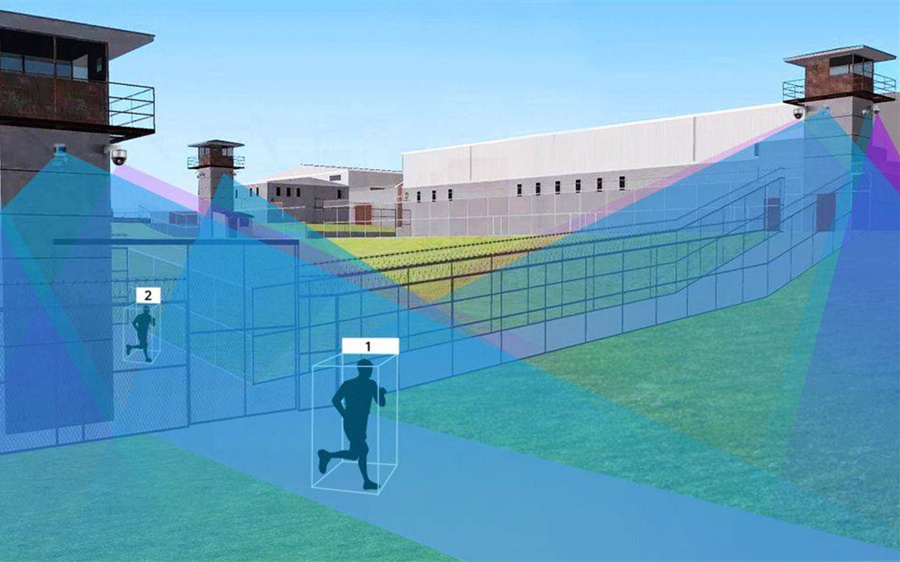Intrusion Alarm Revolution: How Advanced Radar Technology Secures Your Perimeter

In the critical realm of physical security, the ability to detect an intruder early, accurately, and reliably is paramount. Traditional intrusion alarm systems, while useful, often struggle with environmental challenges, false alarms, and blind spots. This is where radar-based intrusion alarm technology emerges as a game-changer, offering a robust, intelligent layer of defense for perimeters, open areas, and critical infrastructure.
Why Radar is the Superior Choice for Intrusion Alarms
Unlike passive infrared (PIR) sensors or motion-activated cameras, security radar operates on a fundamentally different principle. It actively emits radio waves and analyzes the reflected signals. This provides significant advantages for intrusion detection:
-
All-Weather, All-Light Performance: Fog, rain, snow, dust, or pitch darkness – radar sees through it all. Your intrusion alarm remains vigilant 24/7/365, unaffected by visual obscurations.
-
Exceptional Range and Coverage: Cover vast perimeters, open yards, or remote assets with a single sensor. Radar can detect movement hundreds of meters away, providing early warning far before an intruder reaches sensitive areas.
-
Reduced False Alarms: Sophisticated signal processing algorithms distinguish between genuine human threats and nuisance sources like small animals, blowing debris, or vegetation movement. This drastically cuts down on costly and disruptive false alerts.
-
Precise Detection and Location: Advanced radar systems don’t just detect something; they can pinpoint the location, speed, and direction of movement on a map-like display, enabling faster, more effective security responses.
-
Penetration Capabilities: Certain radar frequencies can penetrate light foliage, fences, or non-metallic walls, providing detection capabilities where other sensors fail.
-
Covert Operation: Radar sensors can be discreetly installed, making them difficult for intruders to locate or avoid, unlike highly visible cameras or lighting.
Key Technologies Powering Modern Radar Intrusion Alarms
-
Microwave Radar: Offers excellent range and penetration through adverse weather. Ideal for long perimeters and open areas.
-
Millimeter Wave (mmWave) Radar: Provides incredibly high resolution, capable of distinguishing between individuals and even detecting crawling intruders. Excellent for shorter ranges requiring high accuracy and low false alarms.
-
LiDAR (Light Detection and Ranging): Uses laser light for extremely precise detection and mapping of movement within defined zones. Often used for shorter-range, high-security applications.
-
FMCW (Frequency Modulated Continuous Wave) Technology: The most common in modern security radar. Provides accurate range and velocity measurement simultaneously.
-
AI-Powered Analytics: Modern systems integrate artificial intelligence to learn the environment, classify targets (human vs. vehicle vs. animal), predict paths, and further reduce false positives.
Applications for Radar-Based Intrusion Alarm Systems
-
Critical Infrastructure Protection: Power plants, substations, water treatment facilities, communication hubs.
-
Perimeter Security for Industrial Sites: Factories, warehouses, logistics centers, refineries, chemical plants.
-
Transportation Hubs: Airports, seaports, rail yards.
-
Utilities and Remote Assets: Pipelines, solar farms, wind farms, cell towers.
-
Commercial and High-Security Facilities: Data centers, corporate campuses, government buildings.
-
Correctional Facilities: Perimeter monitoring and detection.
Choosing the Right Intrusion Alarm Radar Solution
When selecting a radar system for your intrusion alarm needs, consider:
-
Required Detection Range: How far out do you need to detect threats?
-
Coverage Area Width: How wide a zone does a single sensor need to cover?
-
Environmental Conditions: Extreme weather, heavy vegetation, dust?
-
Level of Discrimination Needed: Is distinguishing humans from vehicles or animals critical?
-
Integration Requirements: Does it need to integrate with existing VMS, access control, or alarm systems?
-
Power and Connectivity: Availability of power sources and communication lines at the installation site.
The Future of Intrusion Detection is Radar
As security threats evolve and the demand for reliable, cost-effective protection increases, radar technology stands at the forefront. Its ability to provide persistent, accurate, and weather-immune intrusion detection makes it an indispensable tool for modern security operations. Moving beyond the limitations of legacy sensors, radar-based intrusion alarms offer the proactive, intelligent security layer organizations need to safeguard their people, assets, and operations effectively.
Upgrade Your Perimeter Security Today
Don’t rely on outdated methods that leave vulnerabilities. Explore the advanced range of radar-based intrusion alarm solutions designed to provide the highest level of detection accuracy and reliability, drastically reducing false alarms and operational costs. Discover how our cutting-edge security radar technology can be tailored to create an impenetrable shield around your critical assets.
Hongchuang Technology – Innovating Security Through Advanced Radar Detection.
